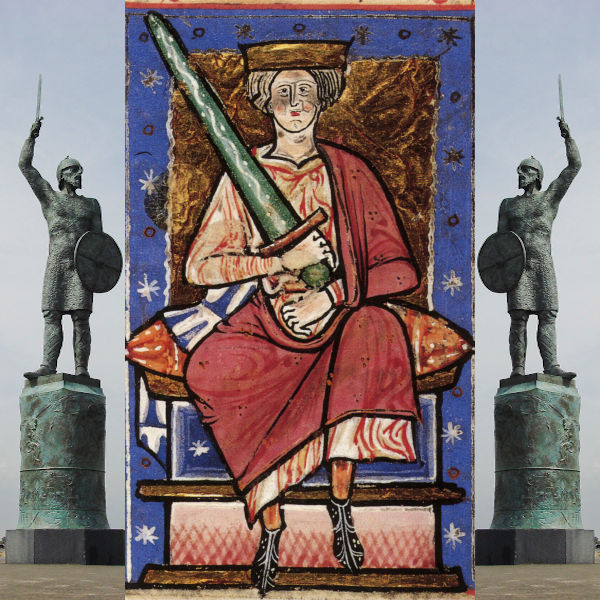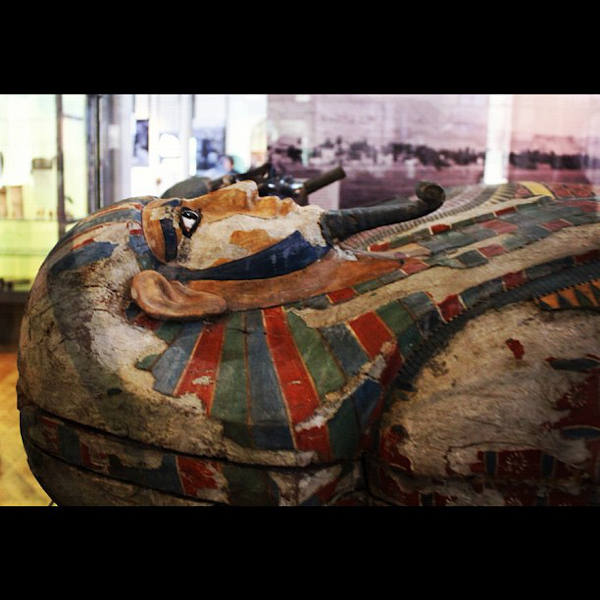Compare your DNA to 168 Ancient Civilizations
FIND THE HISTORY OF YOU
So, you've got your DNA results? To discover who you really are, you need to know where you come from. We can take your DNA results one step further through the use of advanced archaeogenetics
How It Works
Uncovering your ancient ancestry is simple with our three-step process.

Take a DNA Test
Get tested with one of the major DNA testing companies (e.g. AncestryDNA, MyHeritage, FamilyTreeDNA, DanteLabs etc.).

Download Your Raw Data
Download your raw DNA data file from your testing provider's website. We support all major formats.

Upload & Explore
Upload your DNA file to our secure platform and receive your detailed ancestry analysis within minutes.
DIG DEEP
Into Your Ancient History
Your DNA, fully visualized
Explore your roots with exclusive dynamic graphs, interactive maps, and ancestral timelines designed to bring your ancient past to life.

Why Choose MyTrueAncestry
Discover what sets our ancient DNA analysis apart from traditional ancestry services.

100% Anonymous Insights
All retained data is fully anonymized, ensuring your privacy is completely protected.

Powered by Real Ancient DNA
The only service powered by real ancient DNA samples from all over the world and advanced archaeogenetics technologies.

Try For Free
Our basic analysis is 100% free for you to try with no payment method required.
BROWSE OUR DNA SPOTLIGHTS
Pompeii Vesuvius Victim

For the people of Pompeii the world reached a horrific end in the Autumn of
79 AD. The only surviving
eyewitness account of the event consists of two letters written by Pliny the
Younger (who was 17 at the time of the eruption) to the Roman historian Tacitus
some 25 years later. Observing the first volcanic activity from across the Bay
of Naples 29 kilometers away, Pliny the Elder (his uncle) launched a rescue
fleet immediately - while Pliny the Younger stayed behind. He wrote of a
extraordinary dense cloud rising above mount Vesuvius. His words describe a
pine-tree with spreading branches which was sometimes bright and sometimes dark
and spotted - impregnated with earth and cinders. After three tremors the sea
rolled back upon itself. Flashes appeared through dark clouds and ash fell like
a blanket of snow.
Meanwhile for Pliny the Elder things were taking a turn for the worse. As
commander fo the Roman fleet at Misenum he went to investigate the phenomenon at
close range. He ordered the fleet galleys to evacuate the people on the coast.
As he neared the other side of the bay he encountered thick showers of hot
cinders, lumps of pumice and pieces of rock. Ignoring the helmsman to turn back
Pliny insisted that Fortune favors the brave and continued to Stabiae - a town
about 4.5km from Pompeii. Very soon they realized the strong onshore wind
prevented any ships from leaving. Pliny and his party saw flames shooting from
parts of the mountain - presumed to be burning villages. Forced to stay
overnight the crew attempted to approach the beach with pillows tied to their
heads to protect from rockfall - however the wind had not changed and exhausted
Pliny sat down on a sail for a rest to never stand again.
Read more here
St. Brice's Day Massacre

Aethelred II, known later as the Unready, was King of the English from
978 to 1013 and again from 1014 until his death. He came to the throne at the
age of 12 after his half brother was murdered. At the start of his reign, Danish
raids on English territory began in earnest. Aethelred defended his country by a
diplomatic alliance with the duke of Normandy. The Battle of Maldon on 11.
August 991 AD involved 2,000-4,000 fighting Viking men led by Olaf Tryggvason
against the Anglo-Saxon leader Byrhtnoth who was the Ealdorman of Essex. This
ended in defeat for the Anglo-Saxons and King Aethelred was forced to pay
tribute, also known as Danegeld, to the Danish king. This payment of 10,000
Roman pounds of silver was the first example of Danegeld in England - a pattern
which would follow. The Danish army continued ravaging the English coast until a
Danegeld of 22,000 pounds of gold and silver was paid - at which point Olaf
Tryggvason promised to never return. Viking attacks only grew worse - Danish
raids would follow leading to an even larger Danegeld payment of 24,000 pounds
for peace in the Spring of 1002 AD.
The same year, Aethelred married Lady Emma, the sister of Duke Richard II
of Normandy in hopes of a stronger diplomatic alliance. On St. Brice's Day, 13.
November 1002, the confident yet paranoid King ordered the killing of all Danes
living on border towns such as Oxford. Aethelred described this massacre in his
own words: ... a decree was sent out by me with the counsel of my leading men
and magnates, to the effect that all the Danes who had sprung up in this island,
sprouting like cockle amongst the wheat, were to be destroyed by a more just
extermination, and thus this decree was to be put into effect even as far as
death, those Danes who dwelt in the afore-mentioned town, striving to escape
death, entered this sanctuary of Christ, having broken by force the doors and
bolts, and resolved to make refuge and defence for themselves therein against
the people of the town and the subrubs; but when all the people in pursuit
strove, forced by necessitym to drive them out, and could not, they set fire to
the planks and burnt, as it seems, this church with its ornaments and its
books.
Read more here
Mummies from the Middle, Late and Ptolemaic Kingdoms

In 1907, two mummies were discovered in Deir Rifeh Egypt in a tomb
belonging to a governor and his sons from the 12th Dynasty (almost 4000 years
ago). The tomb group is one of the best preserved and best known burials of the
Egyptian Middle Kingdom. Although the mummies were heavily decayed, the
skeletons were still preserved. Khnum-Nakht was about 40 years old and
Nakht-Ankh about 60.
The two mummies were found to be brothers with the same mother but
different fathers. This is confirmed by identical mtDNA and the detected
differences in the Y chromosomes. Both suffered from osteoarthtritis and dental
attrition. Khnum-Nakht had kyphoscoliosis and Nakht-Ankh had lung lesions from
sand pneumoconiosis.
Read more here

Join Our Community
Our Community blog is your hub for the latest discoveries in ancient DNA, archaeology, and lost civilizations.
Stay curious, stay connected.
Stay curious, stay connected.

Contact Us:
EMAIL
INFO@MYTRUEANCESTRY.COM
MAILING ADDRESS
MyTrueAncestry AG
Seestrasse 112
8806 Bäch
Switzerland



